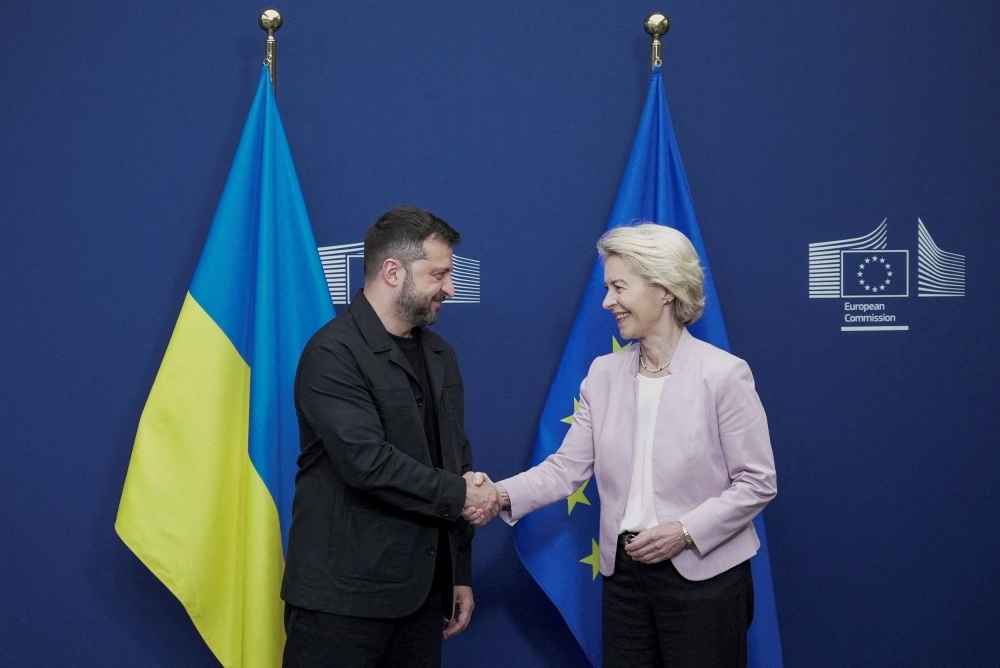In a high-stakes diplomatic push, European leaders are flying to Washington to stand by Ukrainian President Volodymyr Zelenskiy as the war in Ukraine reaches a critical turning point. Their goal: to prevent Ukraine from being forced into a peace deal that could cost the country large swaths of its eastern territory, including the war-torn Donbas region.
The backdrop to this emergency visit is a rapidly shifting political landscape. Former U.S. President Donald Trump—now a dominant political force once again—has emerged from talks with Russian President Vladimir Putin in Alaska seemingly more aligned with Moscow’s idea of a peace agreement. He is now pressuring Ukraine to agree to a swift deal to end what has become Europe’s deadliest war in 80 years.
Zelenskiy, who will meet Trump on Monday, is not coming to Washington alone. European heads of state including German Chancellor Friedrich Merz, French President Emmanuel Macron, and UK Prime Minister Keir Starmer have rallied together in a display of unity and support. Their presence signals a shared concern that Ukraine’s future must not be decided behind closed doors—especially not between Moscow and Washington alone.
Secretary of State Marco Rubio warned in a CBS interview, “If peace is not going to be possible here and this is just going to continue on as a war, people will continue to die by the thousands.” But the nature of the peace being discussed is controversial. Sources say Russia is offering to give up a few small occupied areas in exchange for full control of Donetsk and a freeze on the rest of the front lines.
Russia, meanwhile, insists it too deserves security guarantees, with Russian envoy Mikhail Ulyanov declaring on social media that “Moscow has equal right to expect that.”
In a surprising twist, Trump envoy Steve Witkoff hinted at an alternative to NATO membership for Ukraine—offering Article 5-like protection from the U.S. He claimed, “It was the first time we had ever heard the Russians agree to that.” But many in Ukraine remain wary, having already seen the 1994 nuclear agreement’s guarantees crumble with Russia’s annexation of Crimea in 2014.
As these conversations unfold, the cost of the war continues to climb—over a million people killed or wounded since Russia’s full-scale invasion began in 2022.
On Sunday, European leaders met in private to prepare for the talks with Trump, stressing that any deal must come with concrete and enforceable security guarantees for Ukraine. Their joint statement was firm: “Borders must not be changed by force.”
European Commission President Ursula von der Leyen, Finnish President Alexander Stubb, and Italian Prime Minister Giorgia Meloni—who has admired Trump’s policies—will also travel to Washington, lending their voices to the effort.
The pressure is immense. In February, Zelenskiy was scolded in a public Oval Office exchange by Trump and Vice President JD Vance. Now, European leaders are determined to make sure this week’s talks go differently.
Poland’s foreign ministry reminded the world of a hard truth: “You cannot negotiate peace under falling bombs.”
Zelenskiy, in a post on X, reaffirmed Ukraine’s stance: peace is not peace if it comes at the cost of sovereignty. “Any security guarantees must be practical—on land, in the air, and at sea—and include Europe’s active role,” he stated.
Trump has claimed there has been “BIG PROGRESS ON RUSSIA,” but without sharing details. Behind closed doors, sources say he told Zelenskiy that Putin had offered to freeze most front lines if Ukraine gave up Donetsk—an offer that Zelenskiy swiftly rejected.
The coming days in Washington may prove to be among the most decisive in Ukraine’s modern history. Whether diplomacy will deliver justice or compromise is still uncertain—but the world is watching.




